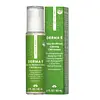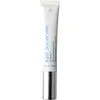What's inside
What's inside
 Key Ingredients
Key Ingredients

 Benefits
Benefits

 Concerns
Concerns

No concerns
 Ingredients Side-by-side
Ingredients Side-by-side

Water
Skin ConditioningAloe Barbadensis Leaf Juice
Skin ConditioningGlycerin
HumectantCetyl Alcohol
EmollientCaprylic/Capric Triglyceride
MaskingMacadamia Ternifolia Seed Oil
EmollientGlyceryl Stearate Citrate
EmollientCannabidiol - Synthetically Produced
AntioxidantCannabis Sativa Seed Oil
EmollientCannabis Sativa Flower/Leaf/Stem Extract
AntioxidantPanthenol
Skin ConditioningAllantoin
Skin ConditioningTocopheryl Acetate
AntioxidantAscorbyl Palmitate
AntioxidantChamomilla Recutita Flower Extract
MaskingPinus Pinaster Bark Extract
AntioxidantXanthan Gum
EmulsifyingDimethicone
EmollientGlyceryl Stearate
EmollientCoco-Caprylate
EmollientCetearyl Glucoside
EmulsifyingPotassium Cetyl Phosphate
EmulsifyingMagnesium Aluminum Silicate
AbsorbentPhenoxyethanol
PreservativeEthylhexylglycerin
Skin ConditioningWater, Aloe Barbadensis Leaf Juice, Glycerin, Cetyl Alcohol, Caprylic/Capric Triglyceride, Macadamia Ternifolia Seed Oil, Glyceryl Stearate Citrate, Cannabidiol - Synthetically Produced, Cannabis Sativa Seed Oil, Cannabis Sativa Flower/Leaf/Stem Extract, Panthenol, Allantoin, Tocopheryl Acetate, Ascorbyl Palmitate, Chamomilla Recutita Flower Extract, Pinus Pinaster Bark Extract, Xanthan Gum, Dimethicone, Glyceryl Stearate, Coco-Caprylate, Cetearyl Glucoside, Potassium Cetyl Phosphate, Magnesium Aluminum Silicate, Phenoxyethanol, Ethylhexylglycerin
Water
Skin ConditioningCaprylic/Capric Triglyceride
MaskingDivinyldimethicone/Dimethicone Copolymer
Cetearyl Alcohol
EmollientDimethicone
EmollientGlycerin
HumectantPropanediol
SolventCyclopentasiloxane
EmollientSodium Ascorbyl Glucoside
HumectantBis-PEG/PPG-20/5 PEG/PPG-20/5 Dimethicone
EmulsifyingMethoxy PEG/PPG-25/4 Dimethicone
EmulsifyingGlyceryl Stearate
EmollientSh-Polypeptide-7
AntiseborrhoeicSodium Chloride
MaskingSodium Phosphate
BufferingDisodium EDTA
Ammonium Acryloyldimethyltaurate/Vp Copolymer
Dimethiconol
EmollientCyclohexasiloxane
EmollientGlucosamine Hcl
Tocopheryl Acetate
AntioxidantAllantoin
Skin ConditioningPortulaca Oleracea Extract
Skin ConditioningButylene Glycol
HumectantElaeis Guineensis Oil
EmollientTocotrienols
Skin ConditioningPisum Sativum Extract
Skin ConditioningBambusa Vulgaris Extract
Skin ConditioningC12-13 Pareth-23
CleansingC12-13 Pareth-3
EmulsifyingTocopherol
AntioxidantXanthan Gum
EmulsifyingProtease
ExfoliatingSodium Hydroxide
BufferingHippophae Rhamnoides Fruit Extract
Skin ConditioningMaltodextrin
AbsorbentEthylhexylglycerin
Skin ConditioningPhenoxyethanol
PreservativeWater, Caprylic/Capric Triglyceride, Divinyldimethicone/Dimethicone Copolymer, Cetearyl Alcohol, Dimethicone, Glycerin, Propanediol, Cyclopentasiloxane, Sodium Ascorbyl Glucoside, Bis-PEG/PPG-20/5 PEG/PPG-20/5 Dimethicone, Methoxy PEG/PPG-25/4 Dimethicone, Glyceryl Stearate, Sh-Polypeptide-7, Sodium Chloride, Sodium Phosphate, Disodium EDTA, Ammonium Acryloyldimethyltaurate/Vp Copolymer, Dimethiconol, Cyclohexasiloxane, Glucosamine Hcl, Tocopheryl Acetate, Allantoin, Portulaca Oleracea Extract, Butylene Glycol, Elaeis Guineensis Oil, Tocotrienols, Pisum Sativum Extract, Bambusa Vulgaris Extract, C12-13 Pareth-23, C12-13 Pareth-3, Tocopherol, Xanthan Gum, Protease, Sodium Hydroxide, Hippophae Rhamnoides Fruit Extract, Maltodextrin, Ethylhexylglycerin, Phenoxyethanol
Ingredients Explained
These ingredients are found in both products.
Ingredients higher up in an ingredient list are typically present in a larger amount.
Allantoin is a soothing ingredient known for its protective and moisturizingg properties. Because of this, it is often added to products with strong active ingredients.
Studies show higher concentrations of this ingredient can promote wound healing.
Though it can be derived from the comfrey plant, allantoin is produced synthetically for cosmetic products to ensure purity.
Learn more about AllantoinThis ingredient is an emollient, solvent, and texture enhancer. It is considered a skin-softener by helping the skin prevent moisture loss.
It helps thicken a product's formula and makes it easier to spread by dissolving clumping compounds.
Caprylic Triglyceride is made by combining glycerin with coconut oil, forming a clear liquid.
While there is an assumption Caprylic Triglyceride can clog pores due to it being derived from coconut oil, there is no research supporting this.
Learn more about Caprylic/Capric TriglycerideDimethicone is a type of synthetic silicone created from natural materials such as quartz.
What it does:
Dimethicone comes in different viscosities:
Depending on the viscosity, dimethicone has different properties.
Ingredients lists don't always show which type is used, so we recommend reaching out to the brand if you have questions about the viscosity.
This ingredient is unlikely to cause irritation because it does not get absorbed into skin. However, people with silicone allergies should be careful about using this ingredient.
Note: Dimethicone may contribute to pilling. This is because it is not oil or water soluble, so pilling may occur when layered with products. When mixed with heavy oils in a formula, the outcome is also quite greasy.
Learn more about DimethiconeEthylhexylglycerin (we can't pronounce this either) is commonly used as a preservative and skin softener. It is derived from glyceryl.
You might see Ethylhexylglycerin often paired with other preservatives such as phenoxyethanol. Ethylhexylglycerin has been found to increase the effectiveness of these other preservatives.
Glycerin is already naturally found in your skin. It helps moisturize and protect your skin.
A study from 2016 found glycerin to be more effective as a humectant than AHAs and hyaluronic acid.
As a humectant, it helps the skin stay hydrated by pulling moisture to your skin. The low molecular weight of glycerin allows it to pull moisture into the deeper layers of your skin.
Hydrated skin improves your skin barrier; Your skin barrier helps protect against irritants and bacteria.
Glycerin has also been found to have antimicrobial and antiviral properties. Due to these properties, glycerin is often used in wound and burn treatments.
In cosmetics, glycerin is usually derived from plants such as soybean or palm. However, it can also be sourced from animals, such as tallow or animal fat.
This ingredient is organic, colorless, odorless, and non-toxic.
Glycerin is the name for this ingredient in American English. British English uses Glycerol/Glycerine.
Learn more about GlycerinGlyceryl Stearate is a mix of glycerin and stearic acid.
It is used to stabilize the mixing of water and oil ingredients. By preventing these ingredients from separating, it can help elongate shelf life. It can also help thicken the product's texture.
As an emollient, it helps soften skin and supports barrier-replenishing ingredients.
In cosmetics, Glyceryl Stearate is often made from vegetable oils or synthetically produced.
This ingredient may not be fungal-acne safe
Fun fact: The human body also creates Glyceryl Stearate naturally.
Learn more about Glyceryl StearatePhenoxyethanol is a preservative that has germicide, antimicrobial, and aromatic properties. Studies show that phenoxyethanol can prevent microbial growth. By itself, it has a scent that is similar to that of a rose.
It's often used in formulations along with Caprylyl Glycol to preserve the shelf life of products.
Tocopheryl Acetate is AKA Vitamin E. It is an antioxidant and protects your skin from free radicals. Free radicals damage the skin by breaking down collagen.
One study found using Tocopheryl Acetate with Vitamin C decreased the number of sunburned cells.
Tocopheryl Acetate is commonly found in both skincare and dietary supplements.
Learn more about Tocopheryl AcetateWater. It's the most common cosmetic ingredient of all. You'll usually see it at the top of ingredient lists, meaning that it makes up the largest part of the product.
So why is it so popular? Water most often acts as a solvent - this means that it helps dissolve other ingredients into the formulation.
You'll also recognize water as that liquid we all need to stay alive. If you see this, drink a glass of water. Stay hydrated!
Learn more about WaterXanthan gum is used as a stabilizer and thickener within cosmetic products. It helps give products a sticky, thick feeling - preventing them from being too runny.
On the technical side of things, xanthan gum is a polysaccharide - a combination consisting of multiple sugar molecules bonded together.
Xanthan gum is a pretty common and great ingredient. It is a natural, non-toxic, non-irritating ingredient that is also commonly used in food products.
Learn more about Xanthan Gum